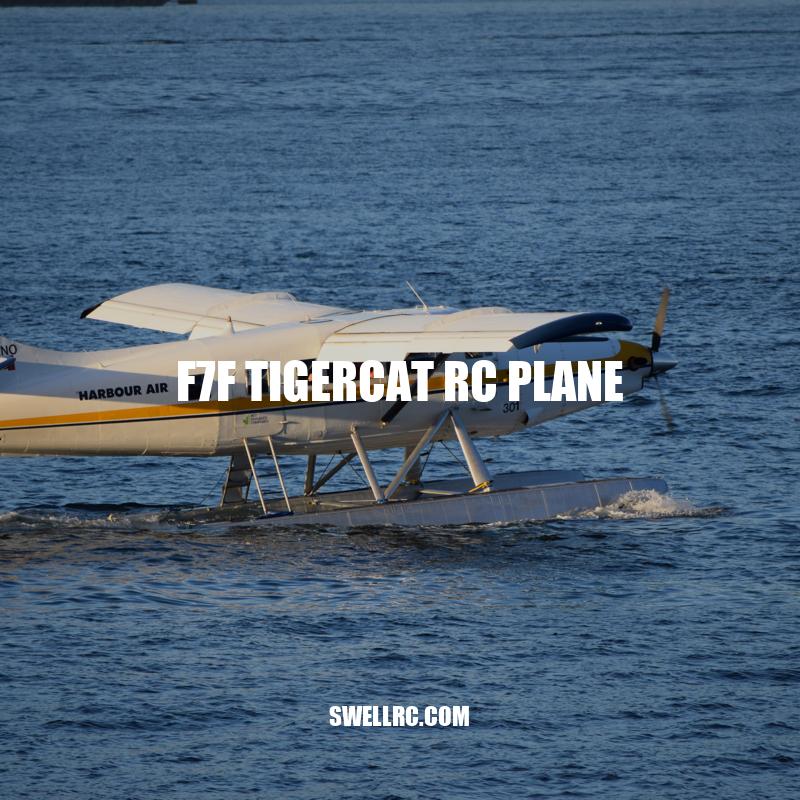F7F Tigercat RC Plane: A Realistic Flying Experience for Hobbyists
The F7F Tigercat RC plane is a scale model of a fighter aircraft that was used heavily by the United States Navy and Marine Corps during World War II and the Korean War. With a wingspan of approximately 63 inches and a length of 51 inches, this remote-controlled aircraft is designed to look and perform like its real-life counterpart. Hobbyists who are looking for a challenge and an opportunity to create something impressive will love building and flying this sophisticated machine. With its two electric motors and electronic speed controllers, the F7F Tigercat can reach impressive speeds, providing the perfect thrill to those who control it. As an intermediate-to-advanced-level plane, it requires some experience to construct and fly. But once mastered, hobbyists can enjoy the feeling of being in control of a miniature version of a once-mighty war machine that helped shape modern military aviation. Let’s take a closer look at the design and features of the F7F Tigercat RC plane, as well as the build process and flying experience.
Design and Features of the F7F Tigercat RC Plane:
The F7F Tigercat RC plane is designed to look as close to the original aircraft as possible while also offering optimal performance and control. Here are some of its key features:
- The plane is made of lightweight materials such as balsa wood, foam, and carbon fiber
- It has a wingspan of approximately 63 inches and a length of 51 inches
- It is equipped with two electric motors and electronic speed controllers for optimal maneuverability and stability
- It reaches impressive speeds of up to 100 miles per hour
- It features retractable landing gear, adding to its realism
- It’s designed for intermediate to advanced level builders and pilots
These features come together to provide hobbyists with an RC plane that looks great and flies like a dream. Many hobbyists will be pleased with the durability of the F7F Tigercat and its ability to withstand crashes and general wear and tear. With these features, the F7F Tigercat can provide a lot of fun and excitement for those who build it and those who witness it in action.
If you’re interested in purchasing an F7F Tigercat RC plane, there are several online hobby shops that offer kits. Some notable websites include Tower Hobbies, Horizon Hobby, and Motion RC. You can find a variety of F7F Tigercat models and configurations, so be sure to do your research and choose the one that’s right for you.
Was the Tigercat a good plane?
The Tigercat was a well-designed plane that served several Marine Corps squadrons after World War II and performed various missions during the Korean War. Although it was too late for service in World War II, the F7F was one of the fastest fighters of the era.
Building an F7F Tigercat RC plane is a great project for anyone interested in aviation and modeling. Here are some key points to consider when building your own F7F Tigercat RC plane:
- F7F Tigercat RC plane kits are available online from a variety of websites
- Most kits come with pre-cut pieces that need to be assembled according to the instructions provided
- The build process can take several weeks, depending on the builder’s experience level
- Some builders choose to modify their planes using custom paint jobs or even custom parts to enhance their appearance and performance
- There are many online communities and forums where hobbyists can share tips and tricks for building and modifying F7F Tigercat RC planes
Table:
| Pros | Cons |
| ————- | ————- |
| Affordable | Limited flight time due to battery life |
| Easy to control | Can be challenging to build for beginners |
| Durable | Can be easily damaged in crashes |
Interesting Fact: The F7F Tigercat was the first twin-engine fighter aircraft to be used by the US Navy.
If you’re interested in building an F7F Tigercat RC plane, there are many online resources available to help you get started. From instructional videos to detailed diagrams and tutorials, you can find everything you need to build your own model. You can also find a variety of tips and tricks for customizing your plane and making it your own, such as using custom paint jobs or adding extra features like lights or sound effects. Whether you’re a beginner or an experienced hobbyist, building an F7F Tigercat RC plane is sure to be a fun and rewarding project.
Did the F7F Tigercat ever see combat?
Yes, the F7F Tigercat saw combat during the Korean War as a night fighter and attack aircraft. However, it was not used in World War II as it was delivered too late. It was designed to be used on Midway-class aircraft carriers, but the early versions were land-based models.
The Flying Experience:
Flying an F7F Tigercat RC plane is an exhilarating experience. Here are some things to keep in mind when taking your plane for a spin:
- The F7F Tigercat RC plane is designed for intermediate to advanced hobbyists
- It requires some experience to master, so it’s important to practice on a simulator or with a trainer plane before taking it out for a flight
- Once mastered, the F7F Tigercat RC plane is highly maneuverable and can perform a variety of stunts, including rolls, loops, and inverted flight
- The plane’s retractable landing gear adds to its realism and allows for smooth takeoffs and landings
| Features | Specs |
|---|---|
| motors | Two electric |
| speed | Up to 100 mph |
| wingspan | Approximately 63 inches |
| length | Approximately 51 inches |
| control | Remote control |
| landing gear | Retractable |
Interesting Fact: The F7F Tigercat was initially designed as a carrier-based fighter aircraft, but was later adapted for land-based use as well.
It’s important to remember that flying an F7F Tigercat RC plane can be challenging, and crashes are a possibility. That’s why it’s a good idea to invest in some spare parts and practice your flying skills in a safe and controlled environment. There are many online resources available for learning how to fly an RC plane, including instructional videos and online communities where hobbyists can ask questions and share tips. If you’re looking for a fun and exciting way to experience the thrill of flight, an F7F Tigercat RC plane may be just what you’re looking for.
Conclusion
In conclusion, the F7F Tigercat RC plane is an amazing replica of the original aircraft, providing aviation enthusiasts with a realistic flying experience. Building and flying such a plane requires some skill, but it is a rewarding experience that offers a great sense of accomplishment. With its sleek design and powerful motors, the F7F Tigercat RC plane is sure to impress both novice and experienced hobbyists. If you’re interested in purchasing an F7F Tigercat RC plane, there are many online retailers that offer kits, spare parts, and accessories. You can also find instructional videos and online communities that provide helpful advice on building and flying an RC plane. Overall, the F7F Tigercat RC plane is a great way to explore your passion for aviation and experience the excitement of flying.



